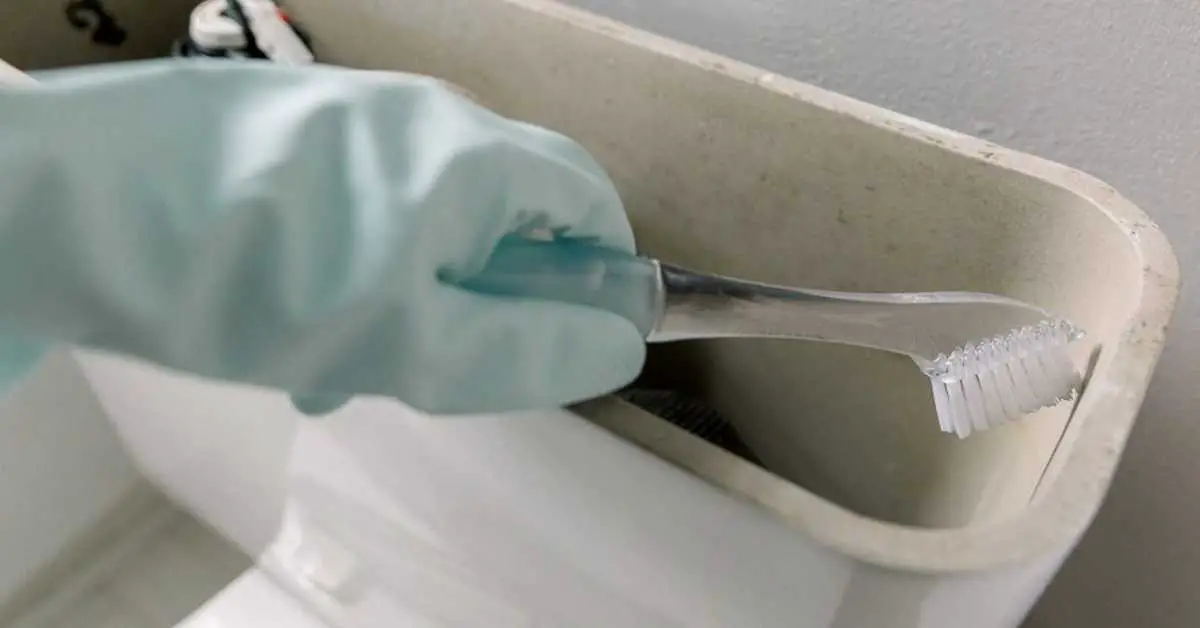Many people clean the toilet tank and bowl with homemade cleaners. I have been using baking soda and vinegar, and it works great to keep the toilet clean.
Can You Put Vinegar and Baking Soda in Toilet Tank? You can put vinegar and baking soda in a toilet tank because it will remove the stains due to mineral deposit, reduces the foul smell, easy to use, and is affordable. It is better to remove the water from the tank and then put this solution along with essential oils and scrub it with a brush to get rid of hard stains and grime from the toilet.
They have multiple uses in bathrooms for cleaning stains and mildew. You can place a towel soaked in vinegar on the area of the stains to remove them.
Why would you put vinegar and baking soda in the toilet tank?
People often use chemical cleaners to remove stains and mineral buildup in the toilet.
Homemade DIY methods to remove rust and mineral deposits from the toilet are safe, as they do not use any harmful chemicals.
Vinegar is acidic with PH 2.5, and baking soda is an alkaline material that is slightly abrasive.
However, they form a powerful chemical reaction that can loosen the hard stains and dissolve the mineral buildup around the tank walls and corners.
It is affordable and budget-friendly because baking soda and vinegar are readily available in your house as you can use these products for many purposes, and is not expensive.
Vinegar alone can also remove stains and rust, but if the condition of the toilet is worse, it is better to use baking soda with vinegar.
Baking soda acts as a deodorizer that can neutralize the foul odor molecules to smell-free molecules and make the bathroom atmosphere fresh and smell-free.
Chemical cleaners can affect the porcelain in the tank, while this homemade solution will not damage any toilet component and give excellent results.
This bathroom cleaner causes a chemical reaction to release carbon dioxide gas, which helps clean the dirt, water lines, and marks on its walls.
How can you clean the toilet tank using vinegar and baking soda?
You can follow the following steps when adding these to the toilet tank.
Remove the water
Remove the lid of the tank and put it on the towel placed on the floor to avoid dirt and germs on your bathroom floor and mats.
Find the valve supplying water to the toilet tank and shut it off because you do not need much water in the tank while cleaning it.
Flush the water 1-2 times before starting the process to remove the stagnant water and bacteria floating over it. The tank must be empty; otherwise, it can contaminate the cleaning solution.
Mix essential oils with baking soda
Essential oils have effective antibiotic properties and can kill harmful bacteria and fungi.
In addition, they can add a refreshing smell when mixed with any homemade cleaner and reduces microbial pollution in the bathroom.
You can mix 4 to 6 drops of lemongrass, tea tree, or eucalyptus essential oils in 1-2 cups of baking soda to enhance the cleaning power and reduce the sharp smell of baking soda and mineral buildup.
Mix the solution in a glass jar or container with a wooden spoon, and avoid using a metal spoon because baking soda can discolor the metal surface.
Put vinegar and baking soda
You can take a gallon of cleaning vinegar instead of white vinegar because it has a high level of acidity and can work well on stubborn stains and limescale buildup.
Leave it in the tank for 11-12 hours to dissolve the grime and stains, and flush it out after 11-12 hours.
Add 1-2 cups of vinegar, baking soda, and essential oil mixture into the tank and allow the reaction for a few hours. The solution can dissolve the mold and mineral buildup to clean it.
Scrub with a brush
Take a long, narrow bristle brush and scrub it around the corners and sides of the tank to remove the mineral buildup and mildew. I often use a toothbrush or a sponge to maintain the water lines around the tank walls.
Leave the solution after scrubbing for 1-2 hours to soak all the rust particles and loosen stains.
Turn on the water supply valve and flush the solution to clean the tank. Refill the tank and flush it again 2-3 times to avoid any remaining solution into the tank and pipes.
Things to consider while using baking soda and vinegar in the toilet
It is better to wear safety gloves on your hands to avoid any damage to your skin.
Wear a mask to avoid fumes through breathing and goggles to protect your eyes.
Do not use bleach in the tank while applying these solutions because it can damage the color and internal parts of the tank and enhance the harmful reaction.
Open the windows and turn on the exhaust fans for ventilation in the bathroom to prevent the fumes and smell. Make sure to wipe the outer sides of the tank and the splashes on the toilet seat.
Wash the toilet brush, sponge, and cup that you used during the cleaning process for later use.
It takes around 1 to 2 hours to clean it, and you can also consult a professional if the mineral buildup and rusting are severe and the tank is not working correctly.
Related Articles:

